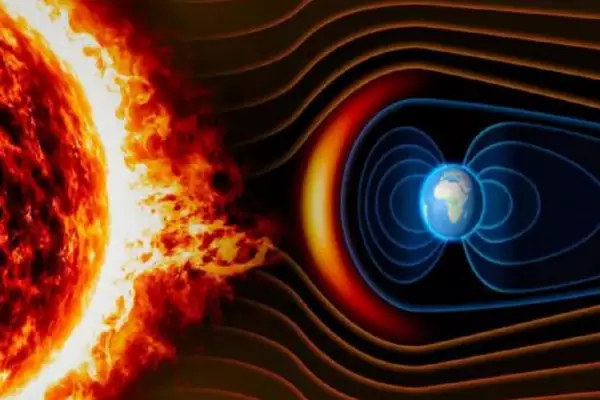Recently, there has been a surge in solar activity, marked by increased sunspots and the launch of multiple Coronal Mass Ejections (CMEs) from the sun.
- NASA reports suggest that Earth might be on a collision course with one of these CMEs.
What are Coronal Mass Ejections (CMEs):
- CMEs involve the expulsion of plasma and magnetic fields from the Sun’s corona.
- These events can eject significant amounts of coronal material and carry an embedded magnetic field stronger than the background solar wind interplanetary magnetic field (IMF) strength.
- CMEs can travel at speeds ranging from slower than 250 km/s to as fast as near 3000 km/s.
Cause of CMEs:
- Solar flares and CME are both caused by the sun when its highly twisted magnetic field structures (flux ropes) contained in the Sun’s lower corona become too stressed through motions in the sun.
- Flux ropes undergo magnetic reconnection, transitioning into a less tense configuration.
- It can lead to the sudden release of electromagnetic energy in the form of a solar flare, often accompanying a Coronal Mass Ejection (CME).
- Such CMEs typically originate in regions of the Sun characterized by concentrated fields of intense and stressed magnetic flux, notably in active regions linked to sunspot groups.
- CMEs can also occur from locations where relatively cool and denser plasma is trapped and suspended by magnetic flux extending up to the inner corona, such as filaments and prominences.
- When these flux ropes reconfigure, the denser filament or prominence can collapse back to the solar surface and be quietly reabsorbed, or a CME may result.
What will happen if CME hits the earth?
- When a CME hits the Earth, it can cause a geomagnetic storm, which is a disturbance of the Earth’s magnetic field and atmosphere by the solar plasma emission.
- When a CME, carrying a magnetic field oriented in the opposite direction to Earth’s magnetic field, strikes the Earth, it can lead to a larger geomagnetic storm.
- The intensity of solar storms is graded on a scale of G1 to G5.
G1 geomagnetic storm:
- G1 storms are the weakest on the scale and can occur on a regular basis, numerous times each month.
- The G1 geomagnetic storm is unlikely to cause any damage to life on Earth but can still affect power grids and impact some satellite functions such as those used for GPS systems and mobile devices.
Ref: Source
| UPSC IAS Preparation Resources | |
| Current Affairs Analysis | Topperspedia |
| GS Shots | Simply Explained |
| Daily Flash Cards | Daily Quiz |



